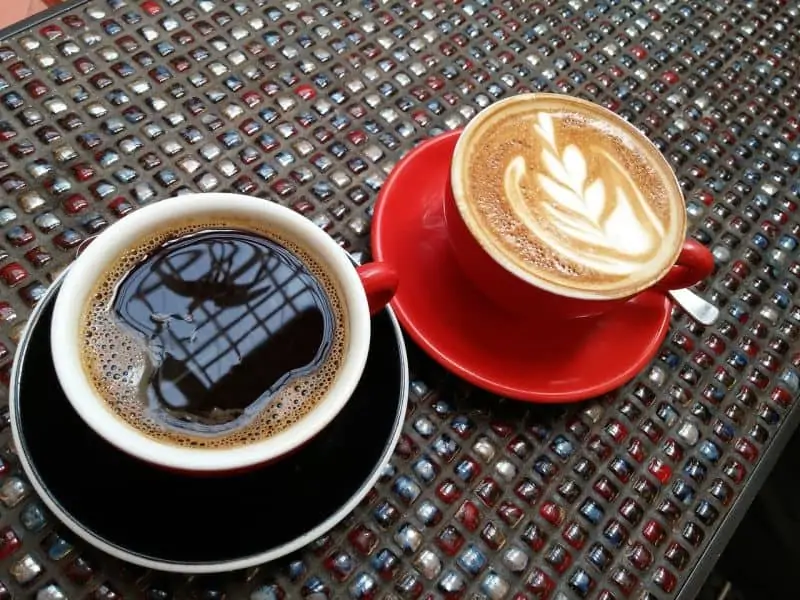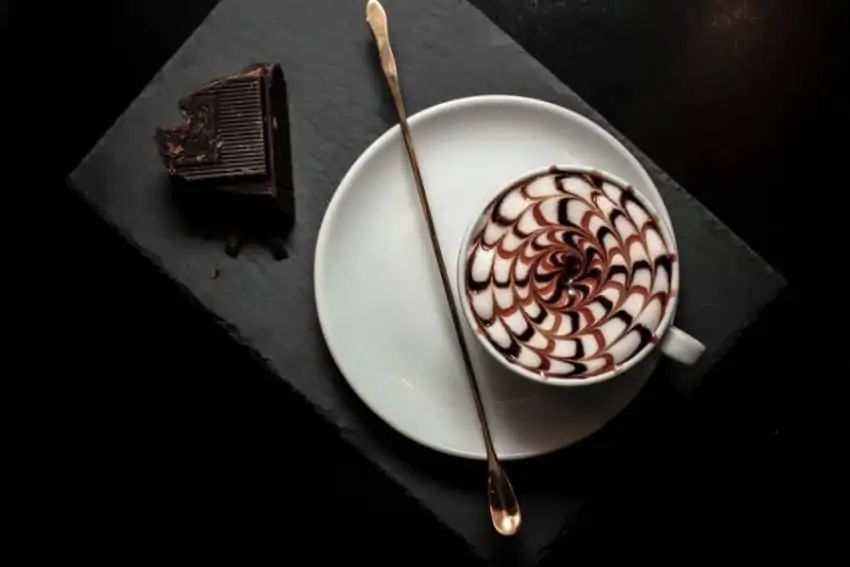At some point, we coffee drinkers think about the caffeine content of the cup in our hands. All coffee-based drinks are bound to have some caffeine. It may be whittled down to a small percentage, but even decaf will have some caffeine. So it stands to reason that your regular cup of cappuccino has caffeine as well.
If you’ve wondered how much caffeine in the cappuccino cup you’re enjoying, you’ll find the answer here. To put it simply, an average cup of cappuccino has about 13mg of caffeine per fluid oz.
Not every cup of cappuccino is the same and neither is the caffeine content. The number is dependent on several factors, including your choice of blend and coffee variety.
Does Cappuccino Have Caffeine?
Cappuccino contains caffeine, though its number will usually be lower than a similar volume of black coffee. The caffeine content of cappuccino comes from the espresso used in the recipe. So let’s start there!
An espresso usually has 64mg of caffeine per oz. A single shot of espresso is usually 1 to 1.25 oz in volume. Based on those numbers, if you’re using a single shot of espresso, your cappuccino has at least 64mg of caffeine.
Of course, the number increases if you choose to go with a double shot of espresso. Since a cappuccino also has steamed/frothed milk, there is a lower amount of caffeine available by volume. Usually, this ends up with the caffeine content of the cappuccino at 13mg per oz.
Cappuccino Vs Coffee Caffeine

Caffeine in a cup of coffee can be up to 200mg for drip coffee. Going purely by numbers, you’ll notice that drip coffee has higher caffeine content (200mg) as compared to espresso (64mg). That’s because the serving size or volume makes a big difference.
A cup of brewed drip coffee is usually 8oz, while a shot of espresso is 1oz or slightly higher. However, when compared to a cup of cappuccino, drip coffee certainly has a higher caffeine content.
That’s because cappuccino’s caffeine content is limited to the shot of espresso poured in. Once you add frothed milk, the volume increases, but the caffeine content does not. Cappuccino recipes suggest that four parts of steamed milk are added for every part of espresso. This 1:4 ratio is responsible for giving the cappuccino its great taste – and lower caffeine numbers by volume!
Meanwhile, your drip coffee has a somewhat consistent flow of caffeine. More coffee you add to the cup, the more caffeine you have.
Cappuccino Vs Instant Coffee
Why would you even compare instant coffee with a good cappuccino? Anyways, this is included for the sake of our comparison of cappuccino vs coffee caffeine. Instant coffee with chicory blend usually has 50-70 mg caffeine for an 8oz cup. A full instant coffee cup has 60-90 mg of caffeine.
In broad terms, the numbers are quite similar for the usual 8oz cup of a cappuccino. Of course, instant coffee can’t come anywhere near a good cappuccino in taste!
Cappuccino Vs Latte
A similarly made cappuccino and latte are essentially going to have the same caffeine content. That’s because both these beverages rely on a shot of espresso to provide their caffeine content. So assuming each of these has a 1.25 oz shot of espresso, the caffeine content for the beverages should be about 80mg.
How Coffee Beans Affect Caffeine Content
The most popular varieties of coffee beans are Arabica and Robusta.
Arabica is generally the preferred variety for most coffee beverages. The taste is milder, and arabica beans often pick up flavors based on where they are grown. You’ll often find spicy, fruity, flowery, or other flavor notes in Arabica beans.
In fact, the flavor notes of chocolate/cocoa are what made cappuccino popular in the early days of coffee.
Robusta, on the other hand, tends to be more bitter. However, it has almost twice the caffeine content of Arabica beans.
There is also less sugar and fat, and these beans contribute to a better crema on top of an espresso. These are the reasons why many baristas prefer Robusta for making espresso.
Generally speaking, your cappuccino is likely to have employed Arabica beans. Although if Robusta was employed, the caffeine content would be significantly higher than our current calculations.
The Caffeine Calculation
If you want to measure how much caffeine made it to your cappuccino, well, look at the shot of espresso. Caffeine content of a cappuccino is dependent entirely on espresso. Keep in mind, that though a cup of cappuccino and espresso may have the same caffeine content, their volumes differ.
In most cases, it is safe to assume that your 8oz cup of cappuccino has roughly 80mg of caffeine. The same caffeine content is true for a 1.25 oz shot of espresso.

